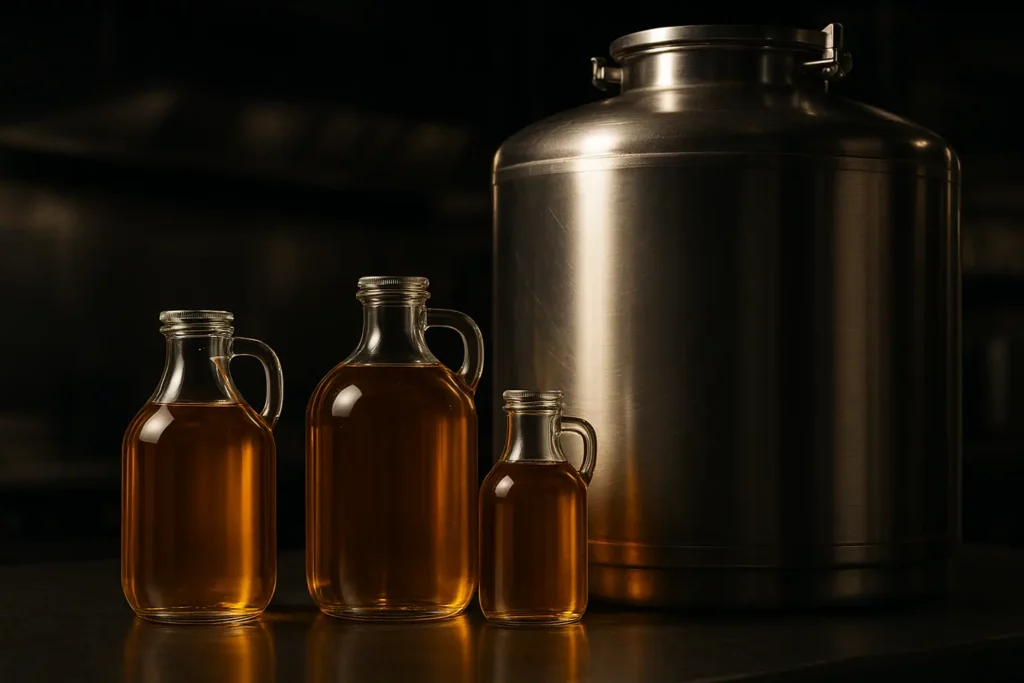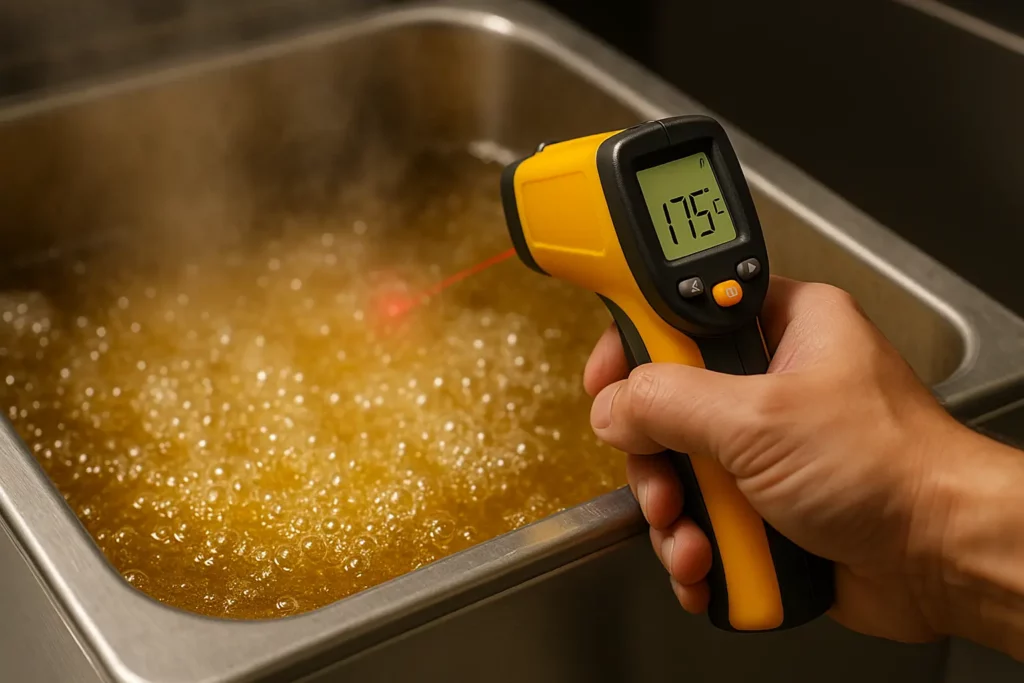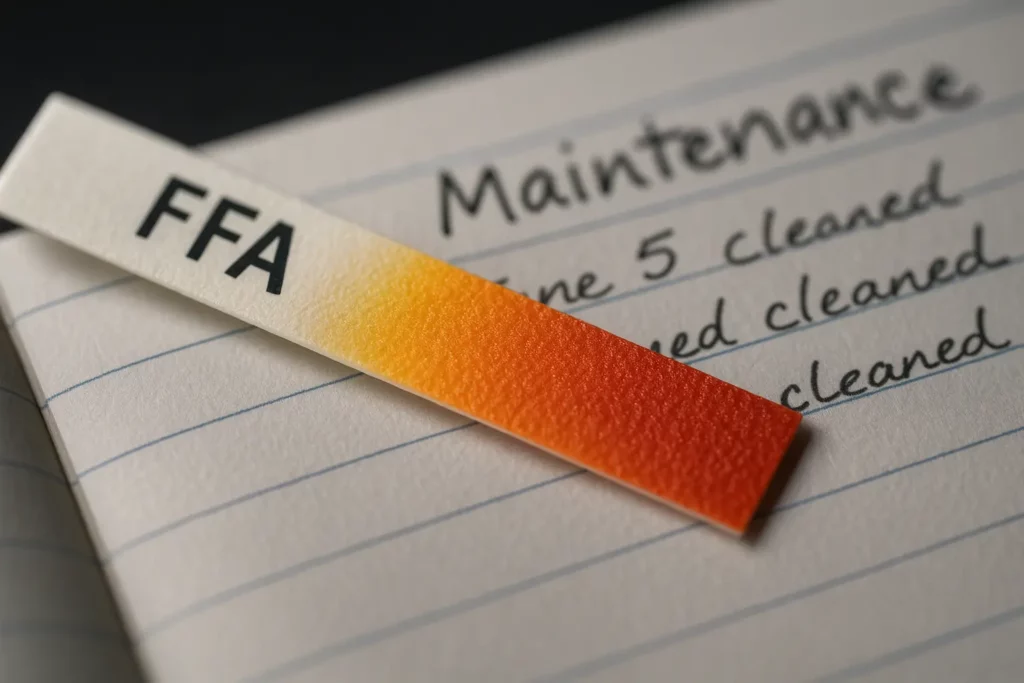Table of Contents
Why Oil Longevity Matters for Your Bottom Line and the Planet

Cooking oil now rivals protein as a restaurant’s fastest rising cost. With wholesale commodity prices up nearly 30 percent since 2022, every extra day of usable oil keeps dollars and carbon out of the trash. On average, a mid volume fryer can burn through 1,000 l of oil per year; extending lifespan by even 20 percent saves roughly $3,000 and prevents 1.7 t of CO₂e emissions. Beyond economics, many cities treat waste oil as a controlled substance, and unscheduled collections invite fines. Learning to slow oxidation, polymerization, and hydrolysis therefore protects profit margins while aligning your kitchen with emerging ESG scorecards and zero waste pledges.
Start with the Right Oil and Store It Smart
Oil choice sets the ceiling on lifespan. High oleic canola, rice bran, and new microbial oils from Zero Acre and Algae Cooking Club boast smoke points above 235 °C and naturally lower polyunsaturates, delaying rancidity. Michelin starred chefs have adopted these oils for performance as much as sustainability. Keep unopened jugs between 10 to 21 °C, away from light, and seal vessels immediately after each top off to limit oxygen ingress. In high volume operations, a 70 gallon square caddy on wheels or a nitrogen blanketed bulk tank reduces headspace and photo oxidation, buying you further days of clarity and flavor stability.
Control Heat: the Silent Oil Killer

Every 10 °C rise above an oil’s optimum doubles its oxidation rate. Maintain frying between 170 to 180 °C and drop to 140 °C during idle periods; tests show idle mode reduction alone extends life by 15 percent. Avoid “spike heating” by loading baskets in small, consistent batches so the thermostat doesn’t over compensate. Calibrate thermostats monthly; a University of Nottingham audit found 22 percent of fryers ran ≥ 10 °C hot. Finally, never “shock” cold product straight from the freezer; thawing lowers moisture blow off and keeps steam from breaking oil molecules apart.
Filter, Skim, and Top Off: Daily Maintenance That Pays
Crumbs are oxidation accelerants; carbonized particles leach metals that catalyze free radical cascades. Skim the surface every 15 minutes during service and pass oil through a 50 micron filter twice daily. Automated pump through systems cost about $4 a day in consumables but can lengthen oil life 40 to 50 percent and improve fry color uniformity. Always top off to the “cold fill” line; fresh oil replenishes antioxidants and dilutes polar compounds. Kitchens using this simple trio report annual savings of 35 to 50 percent on oil purchasing.
Monitor Quality, Then Rotate Strategically

Relying on color alone discards oil too soon, or too late. Instead, combine three quick tests:
| Test Method | What It Tells You |
|---|---|
| Free Fatty Acid (handheld meter) | Measures hydrolysis; discard at 0.9% |
| Total Polar Compounds (strip) | All round freshness; legal limit 25% |
| Smoke point Check (infrared) | Confirms temperature resilience |
Record results in a log so staff can rotate vats intelligently: move the oldest oil to cook breaded proteins, then to par fry vegetables, and finally to pre season cast iron. Data driven rotation routinely adds two service days per batch.
Keep Equipment Clean and Calibrated

Detergent residue and caked polymers trap heat and create hot spots. Boil out vats with an alkaline fryer cleaner every two weeks; a single neglected boil out can cut oil life by 25 percent. Inspect gaskets and cold zone screens for tears that let crumbs recirculate. Where budgets allow, retro fit smart sensors that alert you when Total Polar Compounds cross preset thresholds; Restaurant Technologies reports 18 percent lower oil spend in stores using real time monitors.
Close the Loop: Safe Storage, Collection, and Recycling
When your log says “discard,” move oil through a closed pipe into a fire rated 140 gallon rectangular tank with lid. This prevents slips, burns, and pest attraction while keeping oil fit for biodiesel producers, who pay up to $0.40 / l. Partner with a licensed hauler that provides chain of custody reports; many cities now require them during health inspections. By integrating collection data with procurement invoices, multi unit operators have documented 10 percent shrinkage recovery, demonstrating to investors a hard dollar return on sustainability.
The Big Picture: From Cost Center to Competitive Edge
By choosing heat stable oils, enforcing temperature discipline, filtering with military regularity, and embracing closed loop recycling, kitchens routinely double their oil’s usable life. The payoff is higher quality food, a cleaner hood, fewer deliveries, and a sustainability story your marketing team can quantify: up to 50 percent oil purchase savings and an annual CO₂e reduction equivalent to taking two passenger cars off the road. Treating oil as an asset, not a consumable, turns a line item cost into a competitive differentiator diners increasingly notice.









